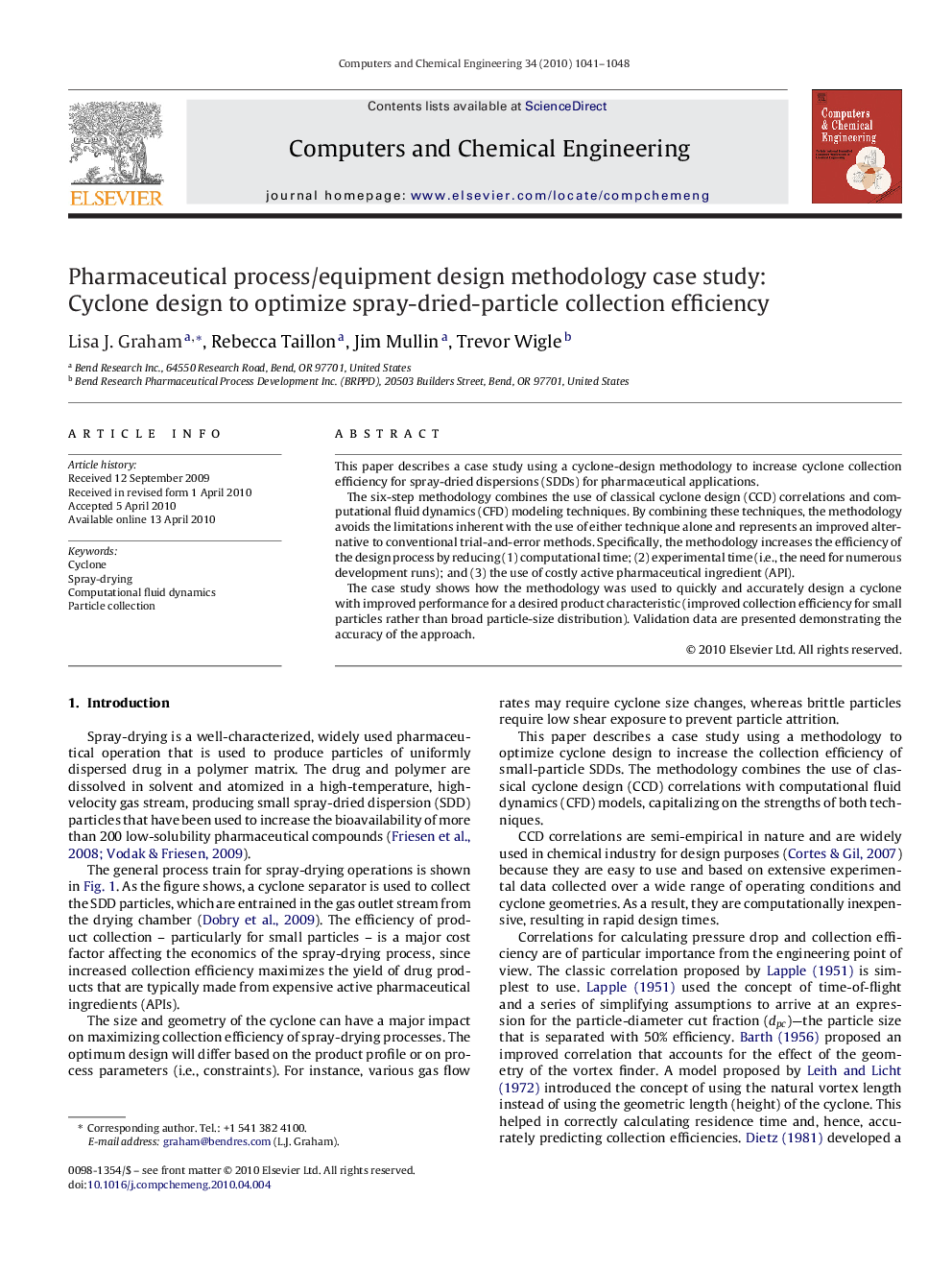| کد مقاله | کد نشریه | سال انتشار | مقاله انگلیسی | نسخه تمام متن |
|---|---|---|---|---|
| 173247 | 458583 | 2010 | 8 صفحه PDF | دانلود رایگان |

This paper describes a case study using a cyclone-design methodology to increase cyclone collection efficiency for spray-dried dispersions (SDDs) for pharmaceutical applications.The six-step methodology combines the use of classical cyclone design (CCD) correlations and computational fluid dynamics (CFD) modeling techniques. By combining these techniques, the methodology avoids the limitations inherent with the use of either technique alone and represents an improved alternative to conventional trial-and-error methods. Specifically, the methodology increases the efficiency of the design process by reducing (1) computational time; (2) experimental time (i.e., the need for numerous development runs); and (3) the use of costly active pharmaceutical ingredient (API).The case study shows how the methodology was used to quickly and accurately design a cyclone with improved performance for a desired product characteristic (improved collection efficiency for small particles rather than broad particle-size distribution). Validation data are presented demonstrating the accuracy of the approach.
Journal: Computers & Chemical Engineering - Volume 34, Issue 7, 14 July 2010, Pages 1041–1048